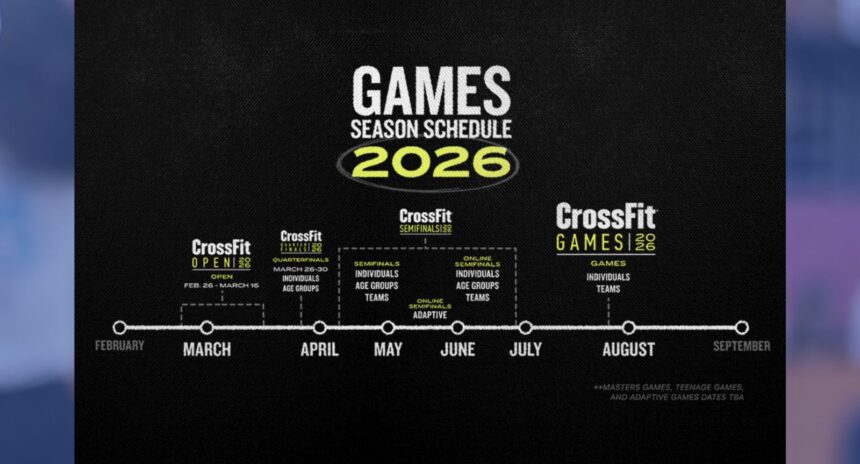How Did 2020 Games Athletes Fare on the Four Rep Max Front Squat Test in Quarterfinals?

One of Dave Castro’s programming tendencies, and gifts, is to evolve various tests over the years. Sometimes the gap between these programming ploys is long, but in the case being studied today, the time gap was very small — a matter of less than six months.
Remind Me: Last October, the 30 qualifying athletes for Stage One of the 2020 CrossFit Games competed in an online format similar to this past weekend’s Quarterfinals. In October, one of the seven tests was a one rep max front squat. The 2021 Quarterfinals featured it’s distant cousin, the four rep max front squat. Natural curiosity begs two questions:
- What is the expected capacity of a four rep max relative to a one rep max?
- How did the 54 athletes who registered official scores for both fare as compared to the expected outcomes? (Six of the 60 from October did not compete in the Quarterfinals for various reasons.)
Expected Capacity: A quick search on Google indicates from a variety of different sources, that 90% of an athlete’s one-rep max is a good indicator of an expected four rep max value.
Here’s what the data looks like:
| Women | Stage 1 2020 Games | Expected Value | QF 2021 | Net Difference | |
| Athlete | 1 RM Front Squat | (90% of 1 RM) | 4 RM Front Squat | (from expected value) | |
| Tia-Clair Toomey | 313 | 281.7 | 282 | 0.3 | |
| Laura Clifton | 302 | 271.8 | 271 | -0.8 | |
| Kara Saunders | 294 | 264.6 | 265 | 0.4 | |
| Dani Speegle | 293 | 263.7 | 257 | -6.7 | |
| Amanda Barnhart | 291 | 261.9 | 272 | 10.1 | |
| Andrea Nisler | 287 | 258.3 | 272 | 13.7 | |
| Kristine Best | 283 | 254.7 | 252 | -2.7 | |
| Kristi Eramo O’Connell | 281 | 252.9 | 257 | 4.1 | |
| Melina Rodriguez | 275 | 247.5 | 251 | 3.5 | |
| Brooke Wells | 275 | 247.5 | 257 | 9.5 | |
| Karin Freyova | 275 | 247.5 | 245 | -2.5 | |
| Laura Horvath | 275 | 247.5 | 261 | 13.5 | |
| Jamie Simmonds | 270 | 243 | – | – | |
| Kristin Holte | 267 | 240.3 | 253 | 12.7 | |
| Gabriela Migala | 265 | 238.5 | 252 | 13.5 | |
| Sanna Venäläinen | 262 | 235.8 | 243 | 7.2 | |
| Camilla Salomonsson Hellman | 259 | 233.1 | 232 | -1.1 | |
| Sara Sigmundsdóttir | 255 | 229.5 | – | – | |
| Emma McQuaid | 253 | 227.7 | 254 | 26.3 | |
| Brooke Haas | 253 | 227.7 | 243 | 15.3 | |
| Carol-Ann Reason-Thibault | 250 | 225 | 230 | 5 | |
| Kari Pearce | 246 | 221.4 | 231 | 9.6 | |
| Danielle Brandon | 244 | 219.6 | 251 | 31.4 | |
| Kendall Vincelette | 241 | 216.9 | 242 | 25.1 | |
| Bethany Shadburne | 238 | 214.2 | 239 | 24.8 | |
| Haley Adams | 230 | 207 | 220 | 13 | |
| Katrin Davidsdottir | 230 | 207 | 227 | 20 | |
| Samantha Briggs | 225 | 202.5 | 225 | 22.5 | |
| Harriet Roberts | 223 | 200.7 | 209 | 8.3 | |
| Andrea Solberg | 215 | 193.5 | 200 | 6.5 |
Quick Takes:
- Two women (Simmonds and Sigmundsdottir) from Stage One did not compete in the Quarterfinals.
- Of the remaining 28 women five (Clifton, Speegle, Best, Freyova, and Salomonsson Hellman) lifted less than their expected values.
- Of the 22 women who lifted above their expected value:
- Two women (Toomey and Saunders) lifted above but within one pound of what was expected.
- Three women (Eramo O’Connell, Rodriguez, and Reason-Thibault) lifted above their expected value by between two and five pounds.
- Five women (Wells, Venalainen, Pearce, Roberts, and Solberg) were all between five and 10 pounds above their expected value.
- The remaining 13 women all performed their four rep max front squat at greater than 10 pounds above their expected value, with Danielle Brandon leading the way at 31.4 pounds above her expected number.
| Men | Stage 1 2020 Games | Expected Value | QF 2021 | Net Difference | |
| Athlete | 1 RM Front Squat | (90% of 1 RM) | 4 RM Front Squat | (from expected value) | |
| Griffin Roelle | 490 | 441 | 447 | 6 | |
| Tyler Christophel | 457 | 411.3 | 417 | 5.7 | |
| Justin Medeiros | 437 | 393.3 | 402 | 8.7 | |
| Mathew Fraser | 425 | 382.5 | – | – | |
| Chandler Smith | 424 | 381.6 | 390 | 8.4 | |
| Bayden Brown | 422 | 379.8 | 402 | 22.2 | |
| Jeffrey Adler | 418 | 376.2 | 382 | 5.8 | |
| Alexandre Caron | 416 | 374.4 | 382 | 7.6 | |
| Travis Mayer | 416 | 374.4 | 392 | 17.6 | |
| Samuel Kwant | 413 | 371.7 | 385 | 13.3 | |
| Jay Crouch | 412 | 370.8 | 377 | 6.2 | |
| Adam Davidson | 412 | 370.8 | 407 | 36.2 | |
| Bjorgvin Karl Gudmundsson | 406 | 365.4 | 357 | -8.4 | |
| Noah Ohlsen | 401 | 360.9 | 381 | 20.1 | |
| Jonne Koski | 396 | 356.4 | 360 | 3.6 | |
| Scott Tetlow | 395 | 355.5 | 362 | 6.5 | |
| Samuel Cournoyer | 395 | 355.5 | 372 | 16.5 | |
| Saxon Panchik | 391 | 351.9 | 375 | 23.1 | |
| Cole Sager | 391 | 351.9 | 377 | 25.1 | |
| Tim Paulson | 390 | 351 | 350 | -1 | |
| Patrick Vellner | 383 | 344.7 | 381 | 36.3 | |
| Brent Fikowski | 383 | 344.7 | 347 | 2.3 | |
| David Shorunke | 383 | 344.7 | – | – | |
| Luke Schafer | 381 | 342.9 | – | – | |
| Jacob Heppner | 380 | 342 | – | – | |
| Peter Shaw | 377 | 339.3 | 366 | 26.7 | |
| Roman Khrennikov | 376 | 338.4 | 364 | 25.6 | |
| Khan Porter | 366 | 329.4 | 355 | 25.6 | |
| Rogelio Gamboa | 365 | 328.5 | 350 | 21.5 | |
| Brandon Luckett | 363 | 326.7 | 349 | 22.3 |
Quick Hits:
- Four men from Stage One did not compete in the Quarterfinals.
- Of the remaining 25 men, only 2 lifted less than their expected values.
- Bjorgvin Karl Gudmundsson was 8.4 pounds below expected and Tim Paulson was 1 pound below expected. It’s possible that Gudmundsson was not peaking for Quarterfinals and was not worried about where his upper echelon of strength is, or that he was close to hitting a significantly higher number and may have missed the final rep.
- Of the 23 men who lifted above their expected value:
- Two men (Koski and Fikowski) lifted above their expected value by between two and five pounds
- Eight men (Roelle, Chistophel, Medeiros, Chandler Smith, Adler, Caron, and Tetlow) were all between five and 10 pounds above their expected value
- The remaining 13 men all performed their four rep max front squat at greater than 10 pounds above their expected value; Adam Davidson and Patrick Vellner** had the greatest discrepancies and 36.2 and 36.3 pounds above expected value respectively.
- Vellner was dealing with a pretty substantial groin injury during Stage One. His four rep max front Quarterfinals indicates that if healthy he would have squatted at least 415 pounds then.
The big picture: Because Castro programs workouts as evolutions of each other, there are sometimes opportunities to do analysis like this. However, there are many other variables in play here, like injuries (Vellner) and training periodization (Gudmundsson).
One big thing: Nevertheless, this particular set of data shows an extreme improvement in strength relative to what would be expected. Even when factoring in a variable for the expected increase in strength over a six month period of training the numbers are extremely inflated.
So, what are the potential explanations?
- The athletes have gotten stronger in the last six months. Is it likely they’ve improved by this much absent other variables? Probably not. Is it possible? For some, definitely yes.
- Some of these athletes are young and really haven’t reached their potential yet and are seeing massive gains that will not last.
- This possibility holds some weight when considered against the athletes who were closest to what was expected. Most of the athletes who were closest are also the athletes who are probably at either their peak, or a plateau.
- Athletes were better prepared for the Quarterfinals than they were for Stage One of the Games.
- Considering the number of times the Games were postponed, and the unusual way athletes had to continuously extend training cycles to try and keep up as opposed to the predictable schedule athletes were able to adhere to leading into the Open and then Quarterfinals, it’s actually much more likely that most of these athletes were simply more prepared for a big lift this weekend than they were in October.
Final Thought: Whatever the reason is for the large increase relative to expected outcomes, the numbers not just these 54 athletes, but the entire field put up for the four rep max squat test are astounding. And as always, it’s not just the weight, but it’s the fact that these people are also so good at so many other things — many of which most people who can lift heavy can’t do very well — which makes the feat that much more impressive.


